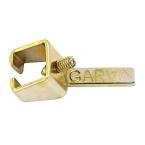- Location
- Lockport, IL
- Occupation
- Retired Electrical Engineer
OK, I know you can lock a breaker's handle in the "on" position, and it will still trip on overcurrent. We are discussing such locks for the red-painted handles of breakers that serve fire alarm components. It is a large industrial facility. Two concerns were raised over resetting a tripped breaker. First, are the locks easy to remove, intended only to prevent accidentally opening a breaker by bumping into it? Or would it require a device (key, screwdriver, special tool, etc.) in order to remove the lock and allow the breaker to be reset? Secondly, is this the kind of thing that would require getting "someone's" permission, before being authorized to remove the lock?





